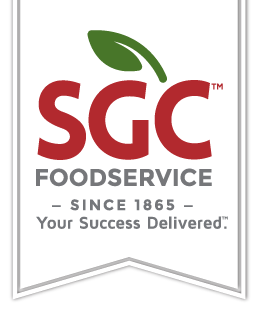In recent years, there has been a growing trend towards the use of robots and automation in various industries, including the service sector. As labor shortages become more acute in some parts of the world, the use of robot servers has become an increasingly popular solution. Some may have already seen the use of robotics in restaurants or even schools. Missouri State University has implemented a delivery robot from their student union to different parts of campus. If this one college is using the approach of a robot as the means of delivery, what does this mean for the rest of the foodservice industry? There will soon be the option for robots to perform human tasks which can be efficient and helpful, but also resort in some drawbacks. Let’s look at 5 pros and cons that people are mentioning regarding robots.
Pros:
1. Increased efficiency and productivity: Robots can perform repetitive tasks quickly and accurately, without the need for breaks or time off, which can improve overall efficiency and productivity in the restaurant.
2. Improved food safety and hygiene: Robots can be programmed to follow strict food safety protocols, reducing the risk of contamination and ensuring that food is prepared and served safely. With humans, they are required to always wash their hands, but then the risk of whether they did or not complete that ask, could create poor results.
3. Cost savings: Robots can help reduce labor costs by performing tasks that would otherwise require human labor. One robot in place of a couple humans could decrease costs towards wages that restaurants are paying.
4. Consistency: Robots can perform tasks with a high level of consistency and precision, which can help to improve the quality of the food and service. If the robot is programmed to complete certain tasks, then that task most likely will be completed with ease.
5. Novelty and entertainment value: The use of robots in restaurants can provide a unique and memorable experience for customers, which can help to differentiate the restaurant from competitors.
Cons:
1. High initial cost: The cost of purchasing and installing robots can be high, which may be a barrier for some restaurants. For some small restaurants and even some bigger restaurants, this might not even be attainable for them with trying to maintain their current earnings. Adding an expensive machine to their business could be quite the investment and take a while to obtain.
2. Impersonal service: Some customers may find the use of robots to be impersonal or lacking the personal touch of human service. Since technology is taking place from a lot of human interaction, going out in public to a restaurant where you would gain that interaction, would simply be less. People long for that connection and a lot of customers depend on authenticity from a restaurant.
3. Limited flexibility: Robots are limited in their ability to adapt to unexpected situations or handle tasks outside of their programming. If a restaurant got unexpectedly busy and the employees were needing to double their workload, the robot would simply not be able to keep up since they were programmed to do the certain task or tasks for that day.
4. Maintenance and repair costs: Robots require regular maintenance and repairs, which can be costly and time-consuming. Just like a car, this robot is a machine that will need to be checked frequently to be sure it is running properly. If it is not, then it is down, and an employer is out an “employee”.
5. Unemployment: The use of robots in restaurants could potentially lead to job losses for human workers, which could have negative social and economic implications. This would be difficult not only for society, but also the people that are working within the restaurant as they will not have that communication amongst each other. Fear could also be created by the employees, with not knowing how much longer they would even get to keep their job.
The use of robots in restaurants is a trend that is likely to continue in the coming years. As technology continues to improve and the cost of robots decreases, more restaurants are likely to adopt this solution in order to remain competitive and meet the changing needs of their customers. If restaurant do decide to take part in adding robots to their business, this doesn’t mean that they need to and should cut out the human employees. Since there are pros and cons to this topic, it could be helpful to have a little of each. Having robots do the easy tasks that are mundane for a human to work on, could be a good way to gain efficiency in a restaurant or food place. As time goes on and technology advances, it will most likely be hard to avoid this addition.

_z8sbiqz9.jpg)